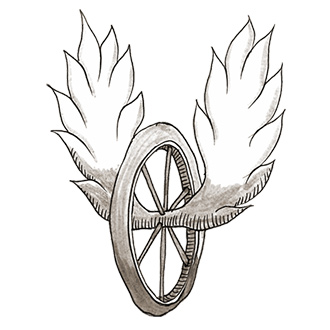
Related Questions
- What’s the difference between a motor and an engine?
- What are the future propulsion systems for interplanetary travel?
- How does an airplane stop on a runway after landing?
- Would it be feasible to dump nuclear waste on the Moon?
- Can robotic submarines collect specimens at any ocean depth?
- Can helicopters fly upside down?
- How does an aircraft steer while taxiing on a runway?
- Why can’t cars run on water instead of gasoline?
- Is there a way to detect my car’s keyless remote if I don’t know where it is?
- Will cars ever be able to drive themselves?
How does a jet engine work?
A lot more efficiently than it used to. Read on…
By Jason M. RubinJet engines create forward thrust by taking in a large amount of air and discharging it as a high-speed jet of gas. The way they’re designed allows aircraft to fly faster and further compared to propeller-driven aircraft. Their development and refinement over the course of the last 65 years has made commercial air travel more practical and profitable, opening the world to business and recreational travelers.
“A typical jet engine is a gas turbine,” says Jeff Defoe, a postdoctoral associate in the MIT Gas Turbine Laboratory. “At its simplest, it’s composed of a compressor, which has blades like wings that spin very quickly. This draws in air and squishes it, making it a high-pressure gas. Then fuel is injected into the gas and ignited. This makes the gas both high-pressure and high-temperature.”
This high-pressure, high-temperature flaming flow of gas now goes through a turbine — essentially, another set of blades — that extracts energy from the gas, lowering the pressure and temperature. “The turbine draws the gas through the engine and out the back through a nozzle that markedly increases the velocity at the expense of pressure — the pressure decreases while the velocity increases,” says Defoe. “It’s the force of the expulsion of gas that provides the thrust to move the aircraft forward.”
Aside from the compression/fuel-ignition/turbine-power aspect of the jet engine, the shell around it also makes it more effective than an exposed propeller engine. “Without a shell around it, a propeller ‘sees’ air coming towards it at whatever speed the aircraft is traveling,” says Defoe. “This restricts how quickly the propeller can spin before the amount of resulting thrust tapers off, limiting the aircraft flight speed. Since the shell on the jet engine keeps the air entering the engine moving at nearly the same speed regardless of flight speed, the aircraft can fly faster.”
These days, jet engines are even more advanced than the basic turbine construction described above. Now they have huge fans in front, and instead of shooting the gas out of the back directly, it goes through a second turbine which powers the fan up front. While older jet engines took a smaller amount of air and accelerated it a lot, newer jet engines take in more air and accelerate it a little. The result is that the engine uses much less energy. “Until the 1970s, trans-pacific flights required refueling stops,” notes Defoe.
In the Gas Turbine Laboratory, Defoe and his colleagues are working to make jet engines quieter and even more efficient by exploring design changes such as taking the engines off the wings and putting them next to the fuselage, where the air molecules have been slowed down by friction. At their largest, jet engines can have fans with a diameter of over ten feet, but they can also be small enough to fit in the palm of your hand. It’s useful to note that massive gas turbines built with the same principles as jet airplane engines are also used for power generation in natural gas power plants.
Thanks to 21-year-old Kumar Vishal from Patna, India, for this question.
Posted: February 14, 2012